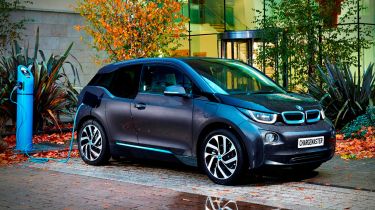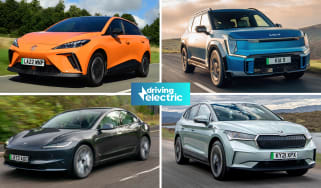Do electric cars need an MOT?
It may be different to run and drive, but your electric car still needs an MOT test. Here’s what you need to know

If you’ve ever owned a car more than three years old for any length of time, you’ll be familiar with the MOT test – and the nervous feeling of hoping the car gets through it without requiring any significant work!
With electric vehicles becoming more prevalent, some people might be confused as to whether these are subject to the same standards as combustion vehicles – after all, with lower rates of tax, perks like free parking in some places and the completely different way in which you ‘fuel’ them, it wouldn’t be a surprise if the MOT test differed, too.
In short, you’ll still need an MOT for your electric car once it reaches three years old, and many of the tests run during the annual check are the same as for petrol and diesel-engined cars. Below, we’ve broken down in more detail what you can expect from any MOT, and how your Nissan Leaf, Tesla Model 3 or Renault ZOE might differ once it reaches a certain age.
What is an MOT?
Effectively, the MOT is a roadworthiness check: a test to ensure your car meets legal safety standards and passes environmental criteria based on its emissions. The test is first required on the third anniversary of its first registration, and then annually after that, but also ideally no more than a month before that anniversary.
If your MOT is due on 1 September for instance, you’d need to have the car tested no later than this date. But if you want the MOT to continue until 1 September the following year, rather than an earlier date, you should also have it tested no earlier than 1 August. You can be fined up to £1,000 for driving a vehicle without a valid MOT.
What does the MOT test involve?
Broadly speaking a qualified MOT tester will inspect your car in six key areas – the interior, the exterior, under the bonnet, under the vehicle, its emissions and its brakes.
In recent years, the testing has become a little more comprehensive to take account of advancing technology and to ensure an even higher level of safety, with different levels of severity applicable to different parts – and anything marked either “Major” or “Dangerous” will result in a fail and require the car to be attended to before an MOT certificate can be granted. “Minor” faults don’t result in a fail, but may need attending to in the near future to prevent them becoming a problem later.
Interior checks comprise things like warning lights, the condition (in safety terms) of seats and seatbelts, the function of wipers and washers, and broadly that everything necessary for driving works as it should (so you won’t fail for a broken sat-nav system, but you will for a non-functioning speedometer).
Exterior checks ensure the car’s legality and safety on the outside – clear numberplates, working and correctly adjusted lights, the general condition of the body, that kind of thing. Underneath the bonnet, the tester will check the vehicle’s structure, the condition of steering, braking and suspension components, while it’s a similar story under the car itself – the condition of wheel bearings, suspension bushes, brakes, wheels and tyres and general condition will all be inspected.

Finally, the tester will assess the condition and ability of the braking system on a set of rollers, to ensure the car has the ability to pull up quickly and in a straight line, as well as the handbrake’s ability to hold the car. The final test is for emissions, where the car is measured for things like particulates, carbon monoxide and oxides of nitrogen against specified limits.
How does the electric car MOT differ?
Having read the above, you might already have deduced that you’ll still need to get an MOT for an electric car, because while they differ significantly in some ways from combustion-engined cars, in other ways they’re effectively identical and so have many of the same parts and systems that can become problematic as a car ages.
For a start, the testing is identical for any vehicle that has a combustion engine, which means conventional hybrids, plug-in hybrids and range-extenders like the BMW i3 REX or Vauxhall Ampera – whether you use the combustion engine much or not. These cars still have their emissions recorded at the relevant point in the test and are still subject to checks for oil and coolant leaks as any other car might be.
Naturally, in a full battery electric vehicle (or indeed a hydrogen car) there’s no test for emissions and there’s no chance of failing on an oil leak! But every other test goes ahead as normal, because an electric car is still subject to the same road conditions and safety regulations as anything else. It’s still possible for an electric car to have structural problems, or worn-out suspension components, or badly adjusted headlights, or cracks in the windscreen – so before taking your car for the test, you’ll want to ensure it’s in good health, as you would with any other vehicle.
There’s no grey area over braking, either. Electric cars predominantly slow down using regenerative braking with the electric motor, but for the time being all still have regular friction brakes and these need to function as they should.
The same goes for tyres – while many electric cars use harder rubber compounds for lower rolling resistance, and these can last many thousands of miles, those tyres still wear, and are still subject to a minimum legal tread depth of 1.6mm. You should check your tyres regularly for both tread depth and inflation (the latter is usually listed on a panel inside the driver’s door frame), even without an impending MOT.
How much does the MOT cost for an electric car?
In terms of the cost of the test, it’s identical, despite the lack of an emissions element. An electric-car MOT costs the same £54.85 (at the time of writing) as any other car’s, prior to any work that might need doing.
Essentially, as your electric car approaches its third birthday you’ll need to start thinking about booking an MOT, and do all the same checks as you’d have done with any previous car you’ve owned – you just won’t have to worry about it failing on emissions...
Most Popular

Volkswagen ID.2 will be a VW Polo for the electric age and we’re buzzing

New Kia Niro and EV6 ‘Horizon’ special editions bring value to brand’s EV line-up

Top 10 best electric cars 2023/2024
